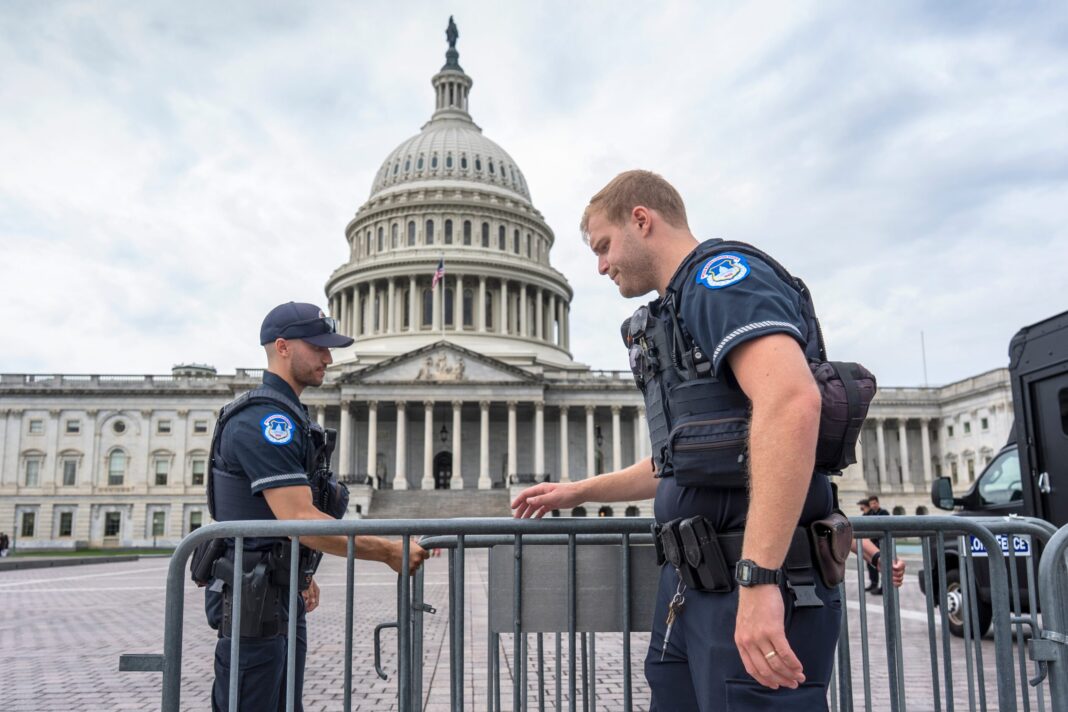White House Prepares for Massive Federal Worker Layoffs Amid Potential Shutdown
As the possibility of a government shutdown looms, the White House has taken a dramatic step by instructing federal agencies to prepare for large-scale layoffs of federal workers. This directive aims to preemptively manage the fallout should funding come to a halt next week. The implications of this move are significant, not just for the affected employees but for the broader landscape of federal governance in the United States.
A New Approach from the Office of Management and Budget
In a memo released late Wednesday night by the Office of Management and Budget (OMB), agencies were advised to consider a ‘reduction in force’ for federal programs that are set to face funding lapses. Unlike previous shutdown scenarios, where non-essential federal workers were furloughed but could return once Congress resolved spending issues, this plan suggests a much more aggressive approach. These reductions would not only entail layoffs but also the elimination of employee positions altogether.
Impact on Federal Workforce Dynamics
The potential reduction in force represents a significant upheaval in a federal workforce that has already undergone multiple cuts in recent years. Efforts from the Department of Government Efficiency and the Trump administration have already strained resources, making this latest directive especially concerning. The turmoil generated by such a drastic measure could destabilize departments crucial to the functioning of the government, affecting programs and services that millions of Americans rely on.
Contingency Planning and Legislative Stalemate
Following a government shutdown, federal agencies are tasked with revising their plans to retain only the minimal number of employees necessary for statutory functions, as outlined in the OMB memo. This requirement indicates that there are serious concerns about operational continuity and how federal agencies will maintain their responsibilities during tumultuous times.
The situation is further complicated by the ongoing standoff between Democratic leaders, including Senate Minority Leader Chuck Schumer and House Minority Leader Hakeem Jeffries, and Congressional Republicans. The Democrats are presently unified against a clean funding bill that would allow the government to operate for another seven weeks. They are demanding immediate reforms in health care provisions before agreeing to any compromises.
Political Responses and Tensions
Immediately following the release of the OMB memo, both Schumer and Jeffries issued statements indicating their firm stance against what they described as intimidation tactics. Jeffries, in particular, pushed back vigorously, labeling OMB Director Russ Vought as a “malignant political hack.” Meanwhile, Schumer characterized the memo as an effort to coerce Congressional Democrats into capitulating to Republican demands.
Both leaders have shown no indication of altering their position in light of the new developments, creating an increasingly tense political atmosphere as the deadline for government funding approaches.
The Role of the OMB in Government Shutdowns
The OMB plays a critical role in managing the complexities of federal government shutdowns, often leading planning initiatives and contingency preparations. Historically, this office has published detailed shutdown plans that specify which employees are designated as essential and which can be furloughed. However, this time around, such plans have not yet been disclosed to the public, raising questions about transparency and preparedness.
Legislative Demands Driving the Crisis
The political impasse is attributed to disagreements between parties over several key issues. Congressional Democrats are resisting the clean funding bill primarily because of their demands for enhanced health insurance subsidies, which are due to expire soon. Additionally, discussions around reversing Medicaid cuts that stem from past Republican tax and spending legislation are also at the forefront of the negotiations.
The OMB memo highlights the urgency of the situation, emphasizing the necessity for the administration to be prepared for a government shutdown if Democrats insist on pursuing their partisan agenda. This urgent tone reflects not only the immediate need for compromise but also the long-standing policy battles that continue to shape federal funding and operations.
Call for Agency Preparedness
As part of its preparations, the OMB has solicited updated lapse plans from federal agencies, which were due by August 1. The importance of timely and comprehensive submissions is underscored by the memo, suggesting that the administration is taking proactive steps to mitigate the impact of a shutdown while maintaining alignment with its priorities.
This latest turn of events underscores the fragile balance of power within the legislative framework and the continuous tug-of-war over competing policy priorities in Washington.



